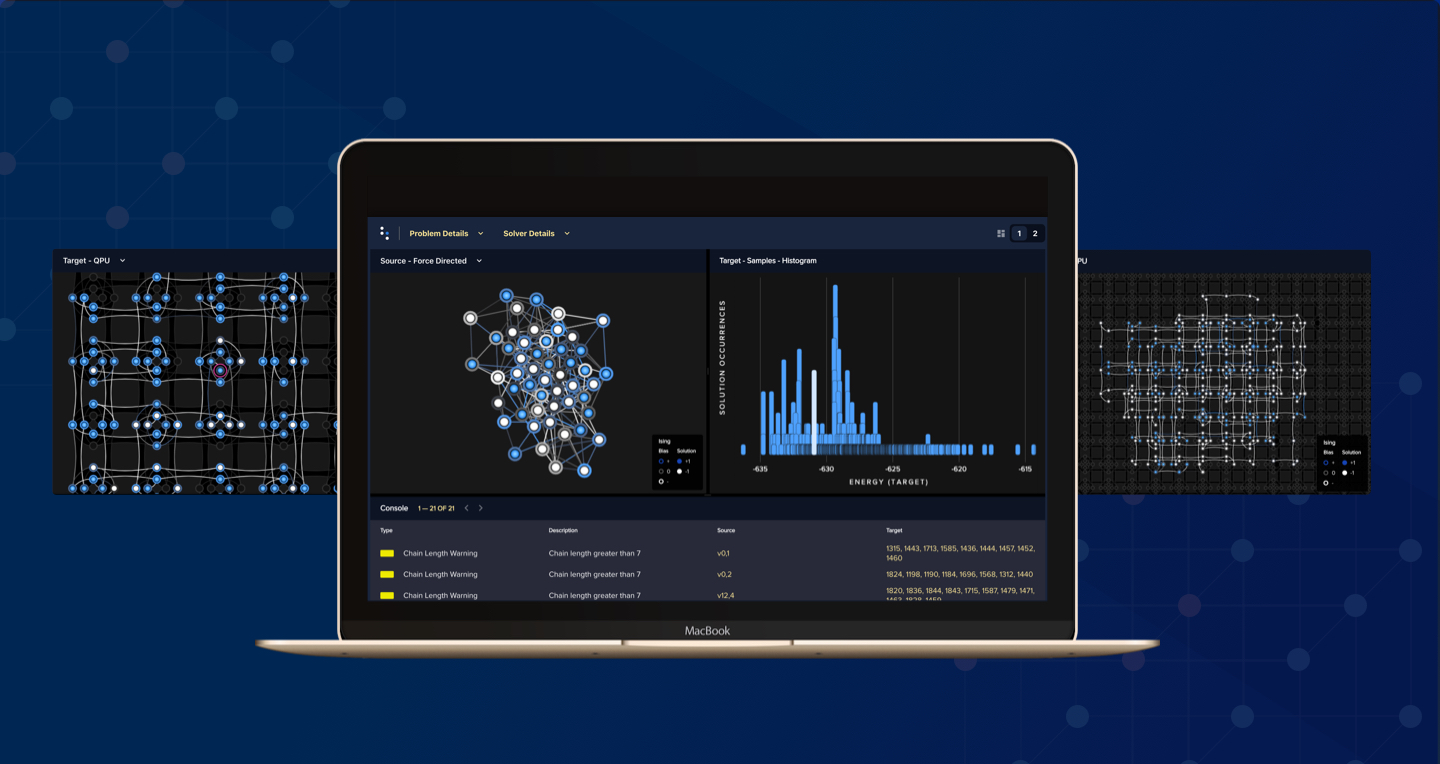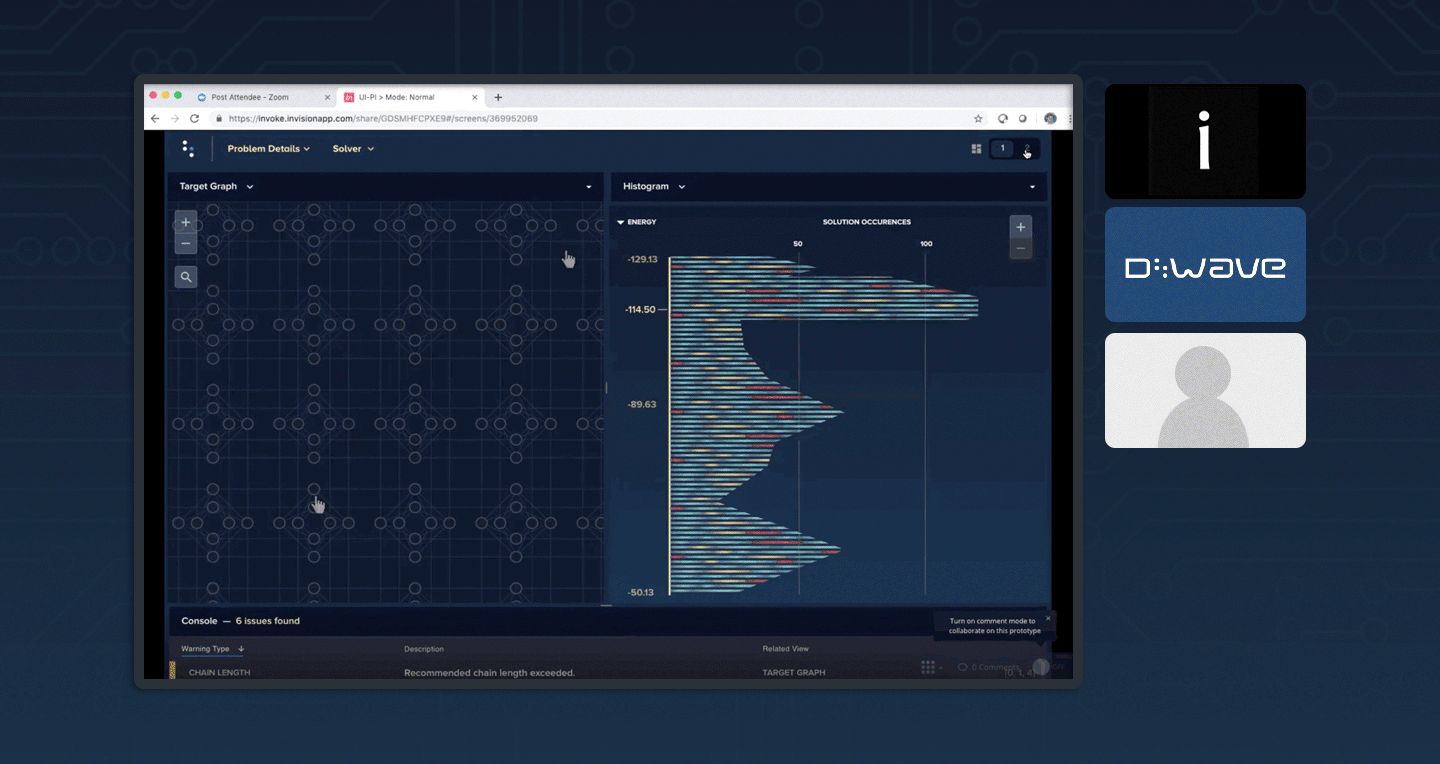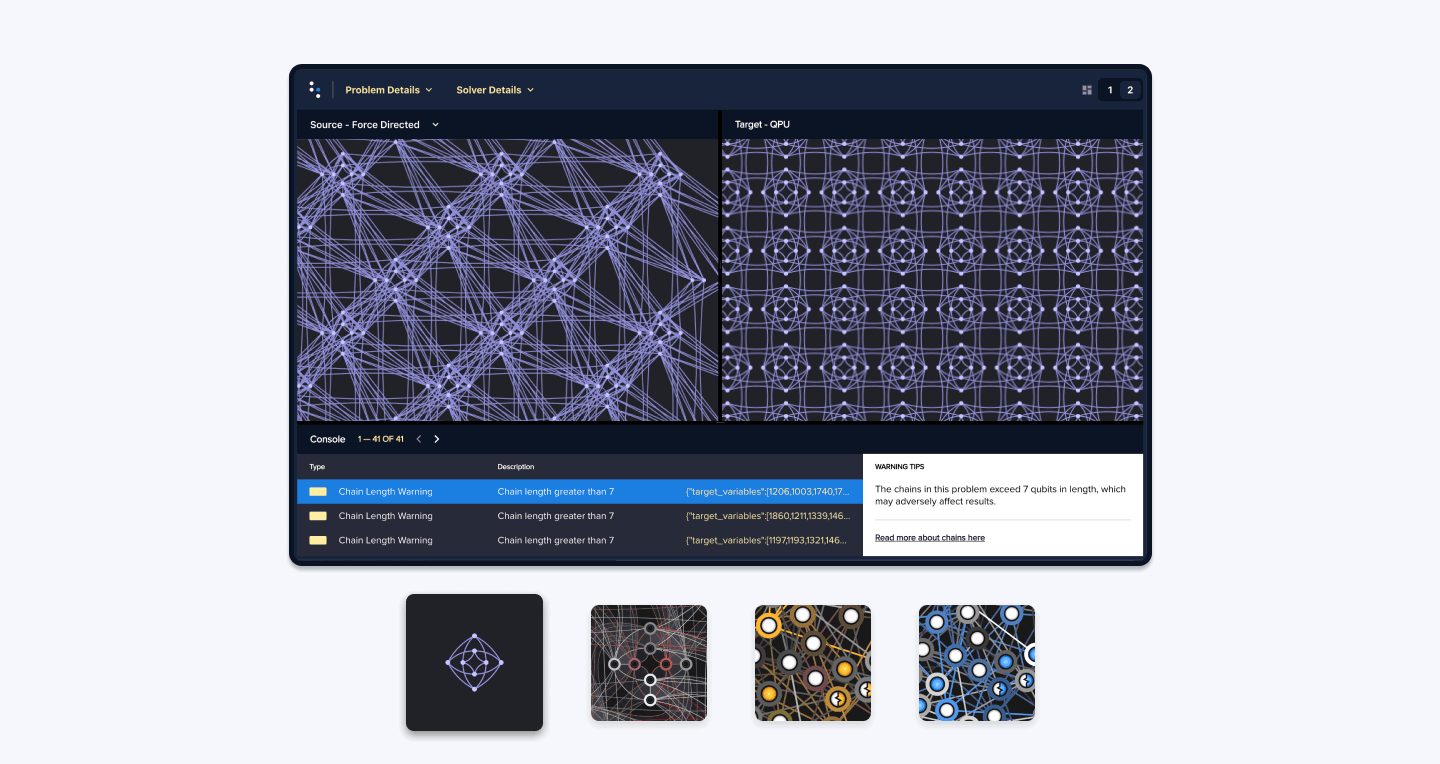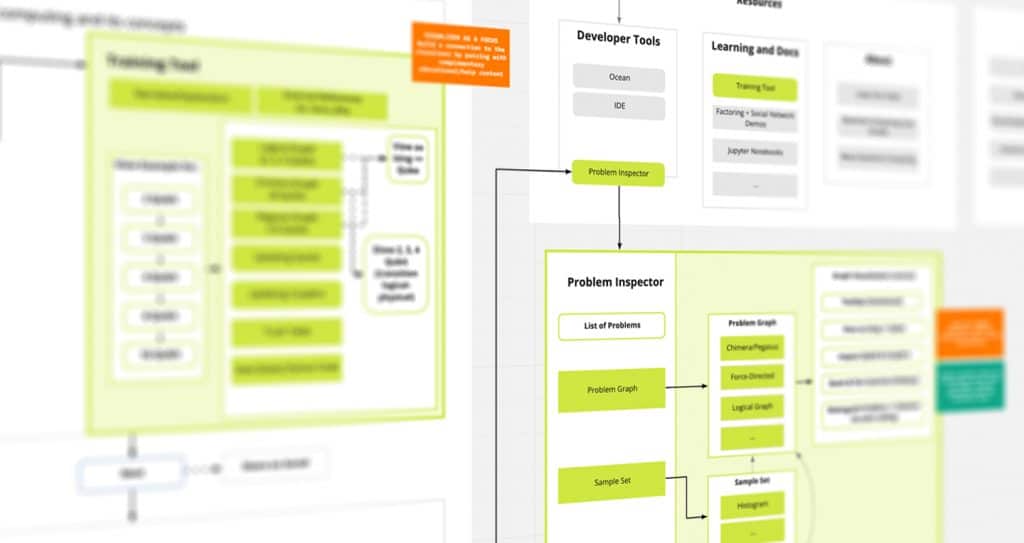06 May 2020 D-Wave Making quantum computing accessible
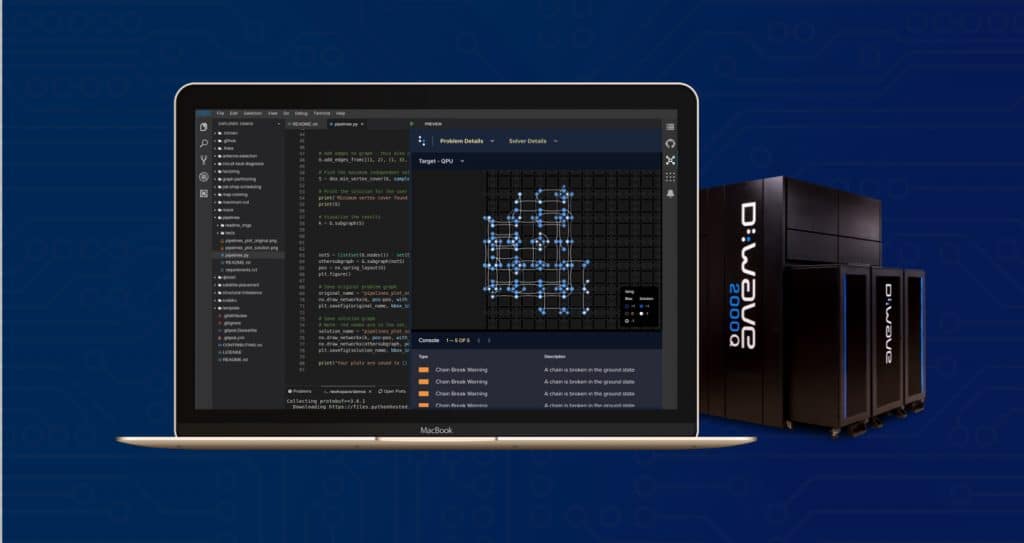
Working with quantum computing pioneer D-Wave to develop a user-centric data visualization tool that helps engineers understand and benefit from D-Wave’s advanced technology.
At the cutting edge of their field
D-Wave is a pioneering quantum computing company based here in BC. Like many of our clients, they’re at the forefront of their field — with their quantum technology securing over $200 million in funding and their customers including the likes of Volkswagen, DENSO, and national labs including Oak Ridge National Laboratory and Los Alamos National Laboratory.
While their technology is incredibly advanced, they sought Invoke’s product expertise — our ability to uncover and analyse opportunities to create experiences at the intersection of desirability, viability, and feasibility — to translate this world class technology into a world class education experience for the engineers that use it.
The core of our engagement was working on D-Wave’s inspector tool and the visualization framework within it that helps customers understand their quantum problems. When we began working with them, the tool was functional on the small scale — visualizing the Chimera Graph (2000 qubits with 6000 couplers connecting the qubits) — but wasn’t particularly user friendly. A large-scale version was underway to visualize the Pegasus Graph (over 5000 qubits and 40,000 couplers), but it wasn’t yet accomplishing what the D-Wave team was targeting.
The scale and complexity of visualizing the Pegasus Graph alongside other important features would prove to be daunting — a challenge our team was up for.
Uncovering opportunities through discovery
To push their product to the next level, we collaborated closely with D-Wave and their customers, facilitating activities to help us uncover opportunities in an industry that was new to our team.
We began with understanding the fundamentals of quantum computing, the business objectives of D-Wave, and the background of their inspector. To do this, we conducted onboarding sessions complete with quantum theory and tool demos and gained insights through internal stakeholder interviews and reviews of comparable products. It is equally important to consider the user by ensuring our solution would meet their needs. Accomplishing this meant understanding their motivations and mapping their experience with D-Wave, done using empathy maps and journey maps.


